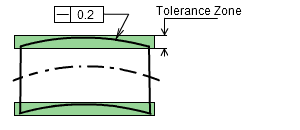
Straightness Tolerance specifies a tolerance zone within which the considered surface of center line must lie. Straightness can be applied to a surface, axis or a median plane.

In case of Axis Straightness, the tolerance zone lies within a cylinder
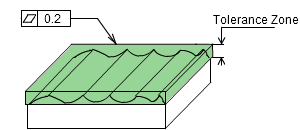
A flatness tolerance specifies a tolerance zone defined by two parallel zones.

A circularity tolerance specifies a tolerance zone defined by two concentric circles. It applies independently at any plane along the axis of the cylinder.
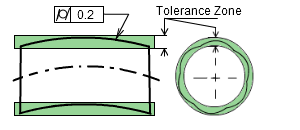
A cylindricity tolerance specifies a tolerance zone defined by two concentric cylinders. It applies to both circular and longitudinal elements of the entire surface.

Unless otherwise specified, the Profile tolerance zone lays between two contours bilaterally offset from the true profile.
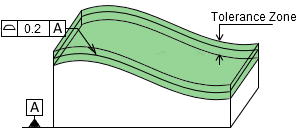
Unless otherwise specified, the Surface Profile tolerance zone lays between two surfaces bilaterally offset from the true surface profile.
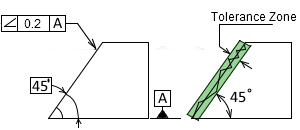
An Angularity tolerance specifies a tolerance zone defined by two parallel planes at the specified basic angle from a datum plane or axis.
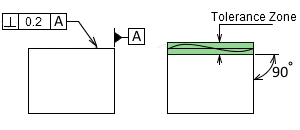
A Perpendicularity tolerance specifies a tolerance zone defined by two parallel planes at the right angle from a datum plane or axis.
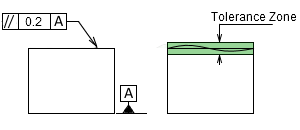
A Parallelism tolerance specifies one of the following:
1) A tolerance zone defined by two parallel planes which are in turn parallel to a datum plane or axis.
2) A tolerance zone defined by a cylinder, axis of which is parallel to a datum plane or axis.

A Position tolerance specifies a tolerance zone defined by a circle or a cylinder with the center locater at given basic distances from the datums.
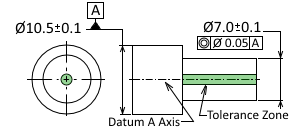
A Concentricity tolerance specifies a tolerance zone defined by a cylinder which axis is in line with the given datum. Centers of all cross sections must lie within the specified tolerance zone.

A Symmetry tolerance specifies a tolerance zone centered about the given datum center plane. All median points of opposed element of the toleranced feature must lie within the tolerance zone.
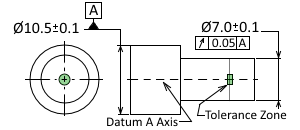
Runout is a composite tolerance used to control functional relationship between a feature to a datum axis. Circular Runout provides control of circular elements of the surface. When applied to surfaces perpendicular to the datum axis it is called End Runout. It controls the wobble of the elements of the surface.
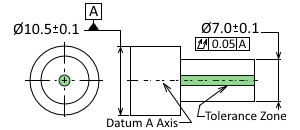
Runout is a composite tolerance used to control functional relationship between a feature to a datum axis. Total Runout provides control of all elements of the surface.
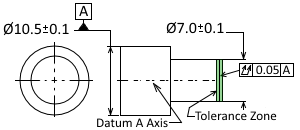
When applied to surfaces perpendicular to the datum axis it is called End Runout. It controls the wobble of the elements of the surface.
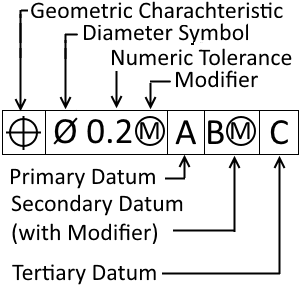
Feature frame carries instructions for the feature to which it is associated.

















